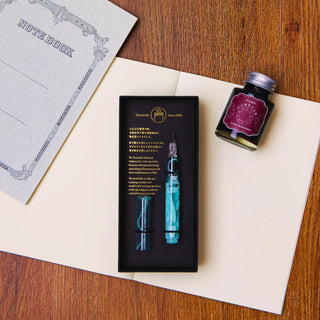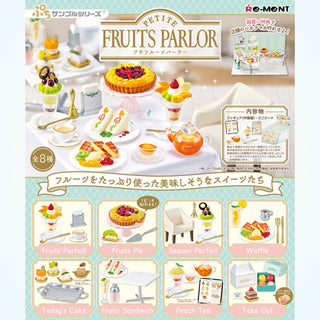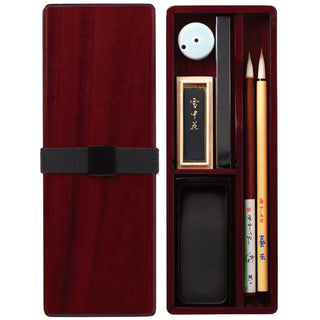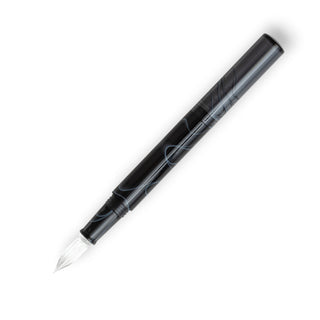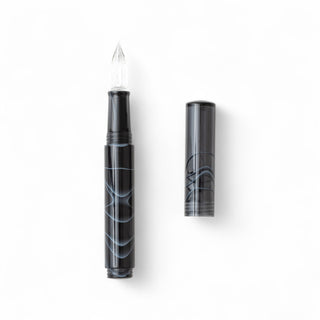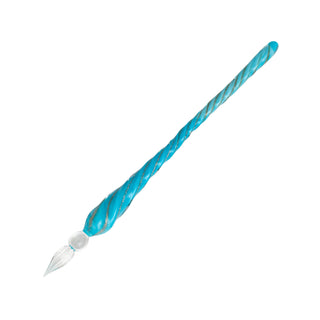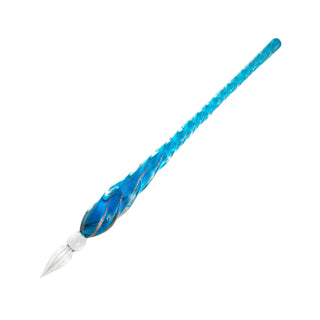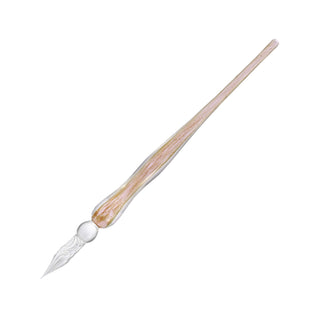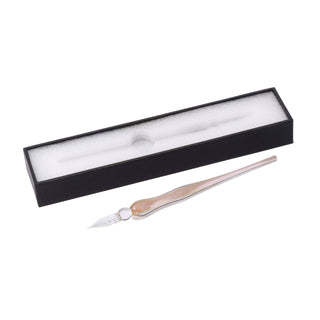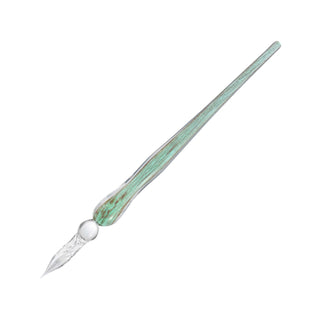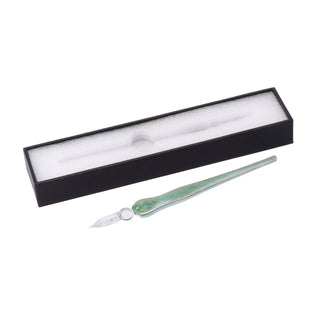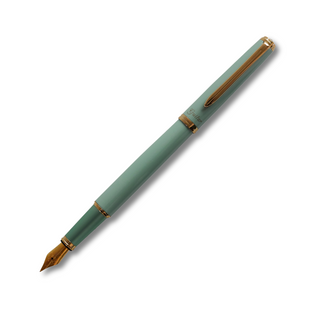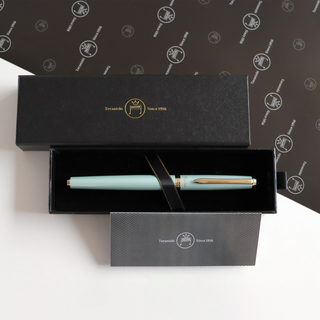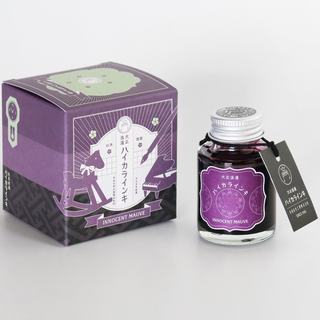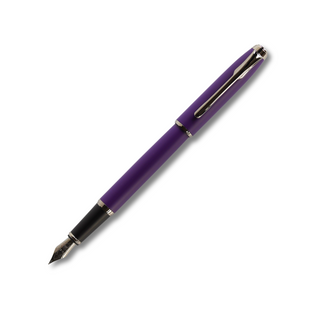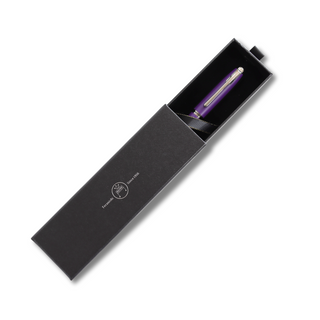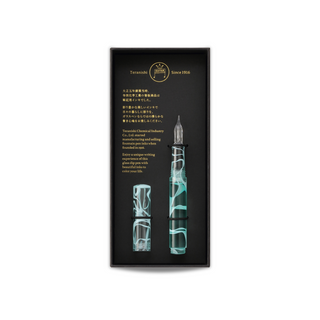
When you think of a pen, what comes to mind? Perhaps a familiar ballpoint with a click mechanism, a sleek metal-tipped design, or a simple capped pen. But have you ever explored the world beyond the everyday writing tool?
At the end of February, we introduced an exciting new collection to our Shibuya Stationery Store, featuring stunning fountain pens, elegant glass pens, and a vibrant selection of inks. With these beautiful additions, there’s no better time to dive into the fascinating world of unique writing instruments—beloved by stationery enthusiasts and collectors alike. This feels like the perfect opportunity to dive into the fascinating world of these unique writing tools—beloved by niche stationery enthusiasts. In today’s blog, we’re taking a closer look at a true classic: the fountain pen. Let’s explore what makes it so special and why it continues to captivate writers around the world.
Fountain Pen
For centuries, fountain pens have captivated writers, professionals, and stationery enthusiasts alike. More than just a tool for writing, they offer an experience—one that bridges the present with the rich tradition of penmanship. When you write with a fountain pen, you’re carrying on a legacy that dates back as far as 953 CE, connecting with a form of craftsmanship that has stood the test of time.
Even in an era dominated by the convenience of ballpoint and gel pens, the fountain pen remains a timeless symbol of luxury, elegance, and artistry—a reminder that writing is more than just putting words on paper; it’s an expression of style and tradition.
What makes fountain pens so special: Pen nib
With so many pens available today, how can you instantly recognize a fountain pen? Unlike ordinary pens, a fountain pen stands out with its distinctive metal nib—a feature that has remained iconic for generations.
While the shape of the fountain pen nib has hardly changed since its invention, its firmness has evolved significantly. Early fountain pens featured flexible nibs that spread slightly with gentle pressure, allowing for smooth, effortless writing. However, as ballpoint pens gained popularity, writing habits began to shift.
Ballpoint pens require more pressure to write, and over time, people adapted to pressing harder when putting pen to paper. In addition, the widespread use of carbon paper in offices—used for making duplicate copies—created a demand for sturdier nibs that could withstand firmer writing. As a result, fountain pens evolved to feature stronger, more rigid nibs, better suited to modern writing styles.
Fountain pens have evolved, yet they continue to offer a writing experience that is both elegant and unique—a perfect blend of tradition and modern practicality. Whether you're a seasoned collector or just beginning to explore the world of fountain pens, understanding their history only deepens their charm and timeless appeal.
One standout example is the Fude de Mannen fountain pen by Sailor, which features an exceptionally distinctive nib. Unlike standard fountain pens, the Fude de Mannen boasts a 40° nib angle, specially designed to create precise, controlled strokes. This unique shape allows for incredible line variation, making it a favorite among calligraphers, artists, and those who appreciate expressive handwriting.
What makes fountain pens so special: Cartridge and converter
One of the defining features of a fountain pen is its ink delivery system, which typically consists of either ink cartridges or a converter.
As the name suggests, an ink cartridge is a small, pre-filled container that stores the ink and feeds it into the pen as you write. Compared to ballpoint pen cartridges, fountain pen cartridges are often shorter but wider in shape.
A converter, on the other hand, functions like a refillable cartridge. Instead of replacing a disposable cartridge, you can use a converter to draw ink from a bottle, giving you access to a wider variety of colors and formulations. This option is perfect for those who enjoy experimenting with different inks or prefer a more sustainable alternative.
For our new Guitar Fountain Pen by Teranishi, we offer a Guitar Fountain Pen Converter that allows you to refill your pen with the ink of your choice.
Quick tip: If you like switching between inks frequently, consider having multiple converters on hand for your most-used colors—it makes swapping inks much more convenient!
FAQs on Fountain Pens
-
How do fountain pens work?
Why does ink flow in a fountain pen?
The short answer? Physics.
The longer answer lies in a fascinating property of liquids called capillary action. This is the ability of a liquid to move through narrow spaces without the help of external forces, like gravity or pressure.
In a fountain pen, capillary action is what allows ink to travel smoothly from the reservoir (cartridge or converter) through the feed and into the nib as you write. The ink is naturally drawn forward by the interaction between the liquid, the pen’s inner channels, and even the paper itself—creating that effortless, flowing writing experience fountain pen lovers appreciate.
It’s science in action, right at your fingertips! To learn more about capillary action in more detail, you might find this article interesting.
-
How to use fountain pens correctly?
When using a fountain pen, three key factors affect your writing experience: angle, posture, and pressure.
A well-balanced writing angle—typically between 40° to 55°—allows for a smooth ink flow and effortless strokes. Unlike ballpoint pens, which rely on wrist movement, fountain pens are best controlled using your arm and shoulder for fluid, elegant writing.
Another important tip: Avoid pressing too hard. Unlike ballpoint pens, fountain pens don’t require pressure to release ink. If your pen is properly filled and maintained, the ink should flow effortlessly with just a light touch.
If you're new to fountain pens, don't worry—it may take a little time to adjust to this different writing technique. Experiment with your grip and posture until you find what feels most natural. The more you practice, the more intuitive and enjoyable writing with a fountain pen will become!
For more information, check out the How to Use a Fountain Pen article by Pilot.
-
Are fountain pen cartridges universal?
Just like refillable ballpoint or gel pens, not all fountain pen cartridges and converters are universal—there’s no true “one-size-fits-all” option.
While some brands produce Standard International Size cartridges that fit multiple fountain pen models, compatibility ultimately depends on the specific pen you’re using. If you want the freedom to use ink from any brand, the best solution is to choose a converter made by the same manufacturer as your fountain pen. This ensures a perfect fit and seamless ink flow, allowing you to explore a wider range of inks without compatibility issues.
-
Are fountain pens better than ballpoint pens?
After diving into the world of writing instruments, it’s clear that both fountain pens and ballpoint pens have their strengths and drawbacks. Ultimately, the best choice depends on your personal preference and writing habits. However, one thing is certain—a fountain pen cannot replace a ballpoint pen, and vice versa. Each offers a unique experience, and that’s what makes them special.
There’s a reason why legendary writers like Jane Austen, Sir Arthur Conan Doyle, Mark Twain, Neil Gaiman, and Stephen King have favored fountain pens. Writing with one is an experience like no other.
Thanks to the fountain pen’s unique mechanism, ink flows effortlessly from the ink reservoir to the nib, gliding smoothly onto paper. This results in a luxurious and effortless writing experience.
And if you opt for a converter, your ink choices become virtually limitless. Whether you're searching for the perfect shade of deep ocean blue or a rich, warm brown, you have the freedom to customize your writing in a way that ballpoint pens simply can't match. To complement our new fountain pens, we’re excited to introduce the Guitar Taisho Roman Haikara by Teranishi—a perfect companion for those who appreciate both style and substance in their writing.
At the end of the day, the choice is yours—but if you haven’t tried a fountain pen yet, you might just discover a whole new way to fall in love with writing.



